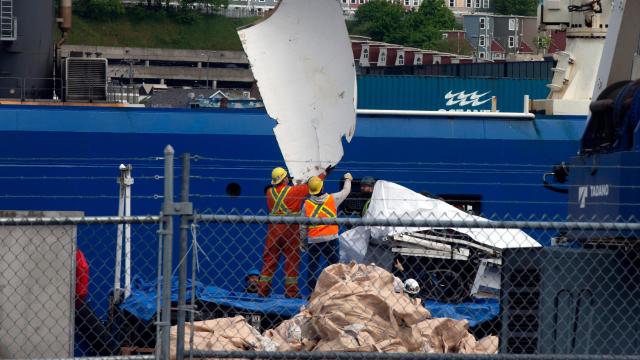A few weeks after the Titan submersible from OceanGate imploded, killing the five passengers on board, news is still trickling in about the bizarre history of the company. Leaked emails now reveal NASA’s reaction after the implosion, as OceanGate had an agreement with the space agency to test the Titan submersible’s carbon fibre pressure hull.
According to a report from Insider, OceanGate announced its partnership with NASA in a 2020 press release with a contract signed early that year. The agreement would see NASA building a scale model of the Titan in order to perform testing of the submersible’s controversial carbon fibre hull at the Marshall Space Flight Center in Alabama. After the submersible went missing in June of this year, NASA emails reveal staff scrambling to clarify to each other that the agency never agreed to be involved with the full-scale submersible and that covid-19 caused NASA to pare down its portfolio of projects.
“COVID struck and this activity was not deemed mission critical and personnel were not allowed onsite,” an email reads, as quoted by Insider. “Oceangate was schedule critical and arranged for commercial entities in their home state of WA to execute the fabrication. While we did provide engineering input Oceangate was the technical authority and made final decisions. We only operated in a consultant role.”
Titan’s carbon fibre hull received particular media attention after the disaster, as former OceanGate CEO Stockton Rush (who perished in the implosion) was criticised for choosing the material to line the hull. To craft the submersible, OceanGate engineers wound carbon fibre around what would be the pressure chamber passengers would ride in. As engineering.com notes, carbon fibre is a great material for aerospace applications as it resists the outward force generated by internal pressure of a fuselage pushing against the lower pressure of the atmosphere. This relationship, however, doesn’t work effectively in reverse—in other words, carbon fibre is not an ideal material to stand up against the hundreds of pounds of force the Titan would experience in a dive to the Titanic. Former OceanGate pilot David Lochridge sounded the alarm on carbon fibre’s fickle capabilities to the company, as detailed by The New Yorker, but to no avail.
OceanGate made headlines across the world this past June after five passengers, including the company’s CEO Stockton Rush, disappeared in the North Atlantic Ocean during a descent to the Titanic wreckage aboard the company’s own Titan submersible. After several days of search and rescue efforts, it was revealed that the passengers immediately perished after the submersible’s pressure hull was compromised, resulting in an incredibly fast implosion. In the aftermath of the tragedy, news coverage revealed Rush and OceanGate cutting costs, using cheap materials, and opting out of regulatory inspections in an effort to lower the price of travelling through the harsh temperatures and pressures of the deep ocean.
